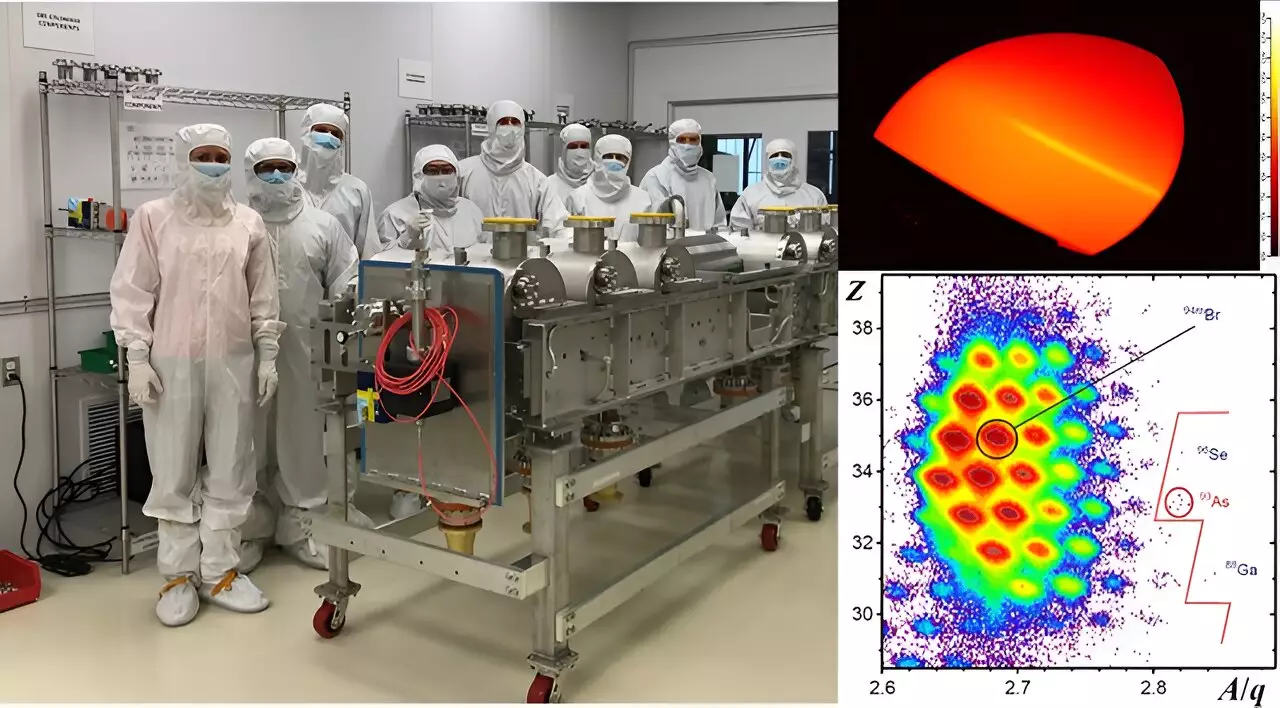In a groundbreaking development within the field of nuclear physics, the scientists and engineers at the Facility for Rare Isotope Beams (FRIB) have achieved a remarkable milestone by accelerating uranium ions to a record-breaking power output. Their innovative efforts culminated in delivering an astonishing 10.4 kilowatts of continuous beam power to a target, according to their published work in the esteemed journal, *Physical Review Accelerators and Beams*. This accomplishment not only underscores the technological advancements being made at FRIB but also points to the significance of uranium in the realm of isotope research.
Uranium has long been recognized as an essential element for scientific inquiries, primarily due to its ability to yield a diverse array of isotopes through processes such as fragmentation or fission. Notably, it is cited as the most challenging element to accelerate in beam experiments. A report by the National Academy of Sciences, in conjunction with the Nuclear Science Advisory Committee, identified over 17 scientific programs that rely heavily on rare isotope beams, with uranium at the center of many of these initiatives. This positions uranium as a crucial component in advancing our understanding of the nuclear landscape.
Opening New Avenues of Rare Isotope Research
The recent success at FRIB marks a pivotal moment, expanding the frontiers of research into previously uncharted territories of the nuclear landscape. During the initial eight hours of operation with the newly established high-power uranium beam, the facility’s scientists were able to produce and identify three new isotopes: gallium-88, arsenic-93, and selenium-96. This rapid achievement highlights the immense potential of the research conducted at FRIB, confirming that it serves as a vital platform for advancing our isotopic knowledge.
Technological Innovations Behind the Achievement
The feat of generating such a high-power uranium beam was underpinned by the stable operation of an array of advanced accelerator devices functioning at their peak capabilities. Central to this achievement is the state-of-the-art superconducting linear accelerator, which comprises 324 resonators housed within 46 cryomodules. Furthermore, novel techniques have been embraced, such as the employment of a liquid-lithium stripper that efficiently facilitates the stripping processes. Coupled with innovative inventions like the Electron Cyclotron Resonance (ECR) ion source, the heavy-ion Radio-Frequency Quadrupole (RFQ), and a specialized high-power target and beam dump, these technologies played a crucial role in reaching unprecedented power levels.
The accomplishment at FRIB was made possible not just through local expertise but also in collaboration with international scientists from countries including the United States, Japan, and South Korea. This international partnership highlights the global significance of isotope research as researchers collectively strive to uncover the mysteries of atomic structure and behavior. The successful simultaneous acceleration of multiple charge states of uranium after treatment with liquid-lithium film epitomizes the innovative spirit driving this research. As scientists continue to explore the implications of this groundbreaking achievement, the future of nuclear science appears to be ripe with possibilities, from fundamental research to practical applications in various fields.
The advancement achieved by the FRIB team not only marks a significant step forward in the study of isotopes but also lays the groundwork for future discoveries that will undoubtedly enhance our comprehension of nuclear physics.

